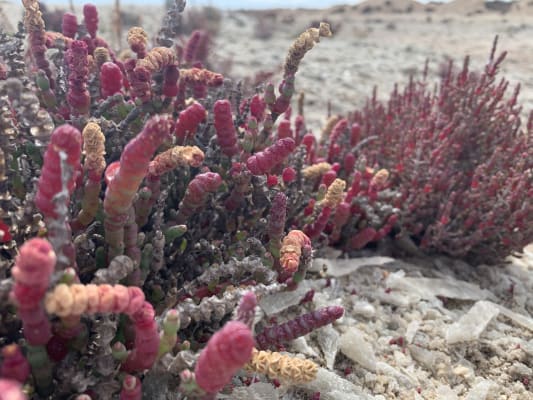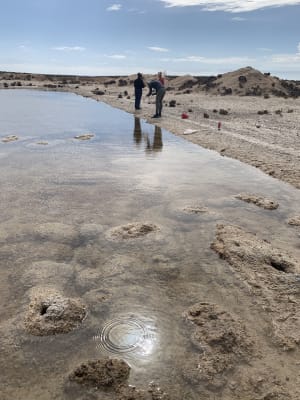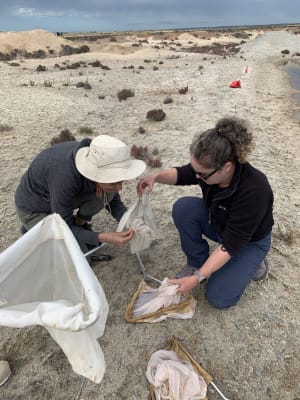Plants up close - a day in the life of a Botanist

Vanessa Greenslade
Today I headed out with the Botanists. I know some people might think that plants are not as exciting as animals that run, fly, sting or scare you but with Peter and Tracey plants came to life today!
The botanists had already spent several days collecting so today the aim was to look for anything different that they may have missed. We headed off to several different habitats including the mallee and wind sept coastal dunes.
The trick is to ‘be very observant’ and look for the very small and unexpected. Such as the fringed lily – a beautiful small purple flower that only comes up after the leaves have died down at the end of winter. And when you dig the plant up it has very fine roots that suddenly bulge into succulent edible roots a bit like a carrot!

On another plant we discovered branches covered in very small white lumps looking like a fairies fairy-floss called a scale. The very weird thing is that the scale is an insect that makes a sugary white food for ants to eat. This means they are attracting ants to be around them and then the ants protect them so they don’t get eaten by other predators!
When you start looking closely you also start to notice the very small including the fascinating lichens that survive on the top surface of the ground, looking dormant most of the time and then with rain coming to life. Lichens are a very interesting and complex life form that is a symbiotic relationship of algae and fungus – so technically only half plant (the algae part).


What was also impressive today was the organised way these botanists collected their samples. This was a very good example of scientific methods. The steps included: photograph the plant, record the GPS coordinates, take a sample of the plant to press in between newspaper and cardboard, save some fleshy part of the plant for DNA testing (this will confirm its identification) and finally record the type of other vegetation in the area.
Question of the day: What part of the plant is most important for identifying which species it is – the flower, the leaves or the roots?
Bonus Question: How do lichens help the plants growing around them?

